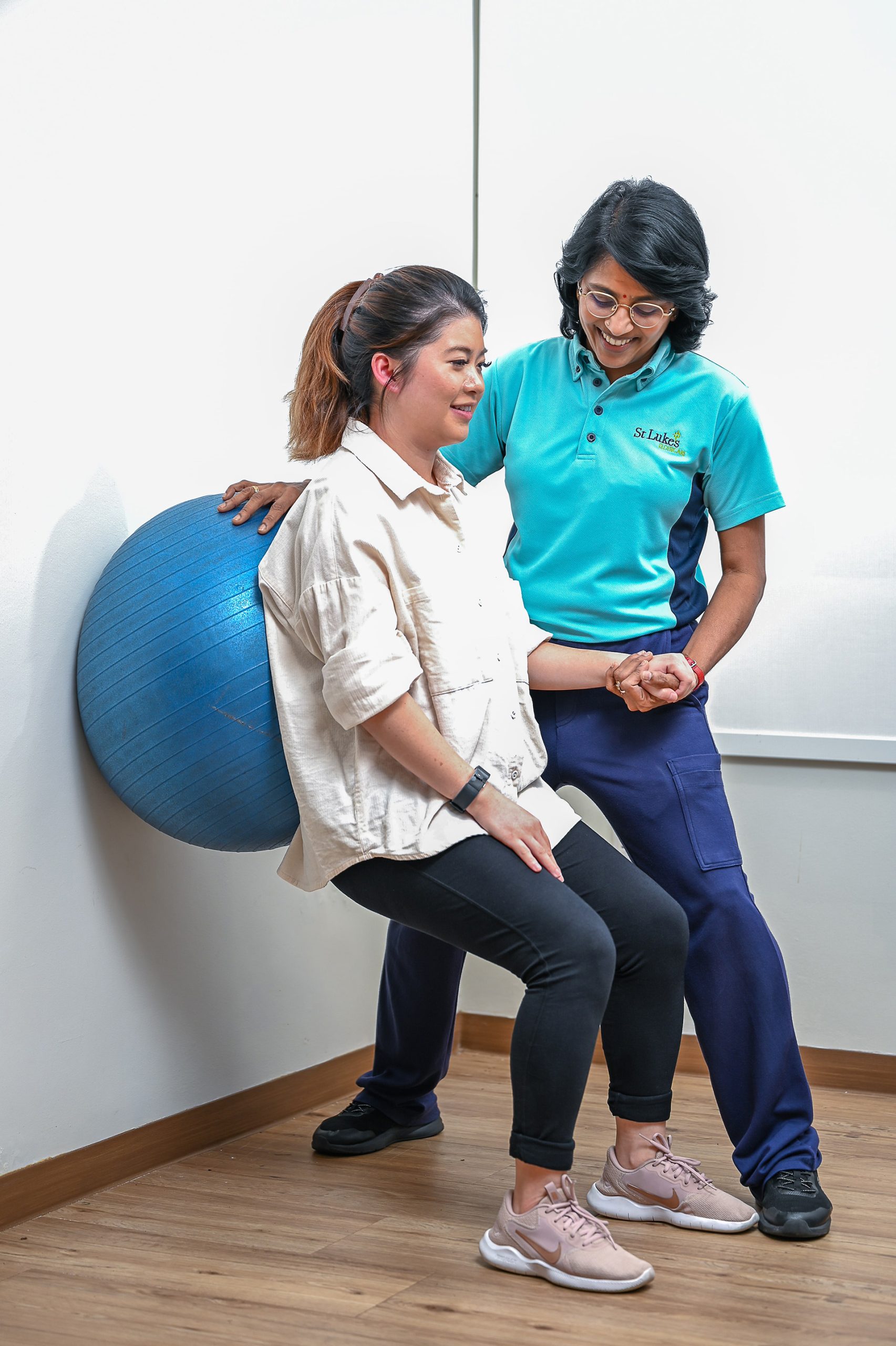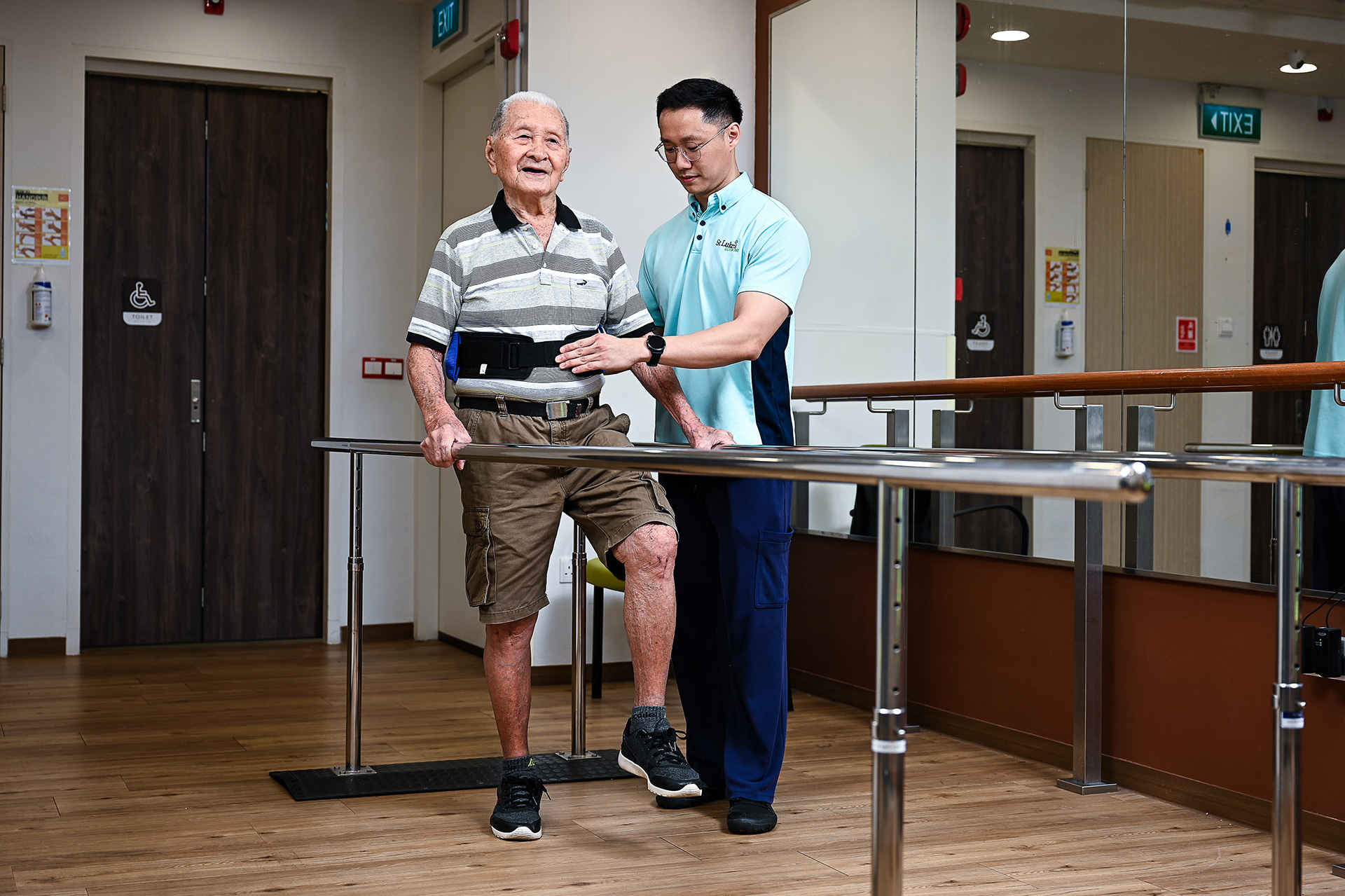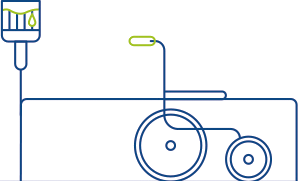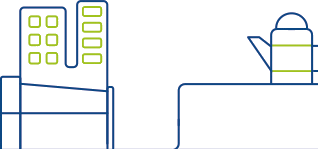COMMUNITY MUSCULOSKELETAL REHABILITATION
Our Physiotherapists at St Luke’s ElderCare (SLEC) work closely with our clients to address their concerns as well as to maintain, restore or maximise their functional ability. Community Musculoskeletal Rehabilitation can be helpful for individuals of all ages who have injuries or conditions that affect the musculoskeletal system, which includes the bones, joints, muscles, tendons, and ligaments.

This type of therapy can be beneficial for both young and old individuals, as it can help improve strength, flexibility, mobility, and overall function, as well as reduce pain and other symptoms. Some examples of conditions that may require musculoskeletal therapy include:
- Cervical and Lumbar Spondylosis
- Cervical and Lumbar Degeneration
- Chronic pain conditions, such as low back pain, fibromyalgia and chronic fatigue syndrome
- Meniscus Injuries
- Musculoskeletal injuries, such as sprains, strains, fractures, and dislocations
- Orthopaedic conditions, such as arthritis, osteoporosis, and degenerative disc disease
- Osteoarthritis (OA)
- Post-surgical rehabilitation
- Prolapse Intervertebral Disc (PID)
- Rotator cuff injuries
- Sports injuries
- Work-related injuries
Community Musculoskeletal Rehabilitation can help these individuals improve their strength, flexibility, mobility, and overall function, as well as reduce pain and other symptoms.

Common Exercises for Community Musculoskeletal Rehabilitation
Some common types of exercises that may be included in a Community Musculoskeletal Rehabilitation programme include:
Range of motion exercises
These exercises help improve flexibility and mobility in a joint or group of joints. They may involve moving the joint through its full range of motion or using tools, such as a therapy band, to gently stretch the muscles and tendons.
Strengthening exercises
These exercises help build muscle strength and improve overall function. They may involve using resistance bands, weights, or other types of equipment, or using the patient’s own body weight as resistance.
Balance and coordination exercises
These exercises help improve balance and coordination, which can be important for preventing falls and improving mobility. They may involve standing on one leg, walking heel-to-toe, or performing other balance-challenging activities.
Endurance exercises
These exercises help improve endurance and stamina, which can be important for activities of daily living. They may involve walking, cycling, or other activities that increase the heart rate and work the muscles for an extended period of time.
Functional exercises
These exercises are designed to help patients perform daily activities more easily and independently. They may involve practicing activities such as dressing, bathing, or climbing stairs.
For further enquiries, please email onepunggoladmin@slec.org.sg.



